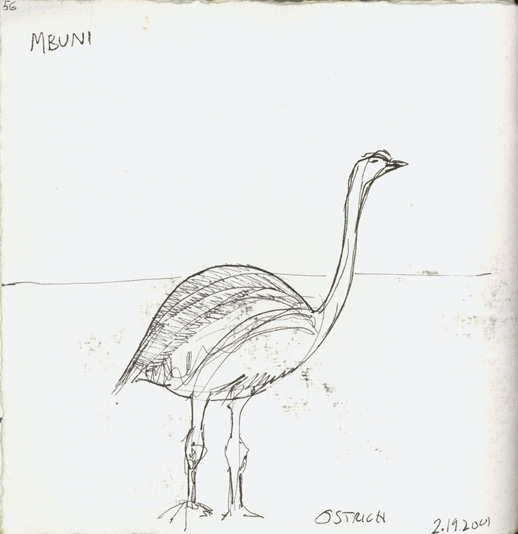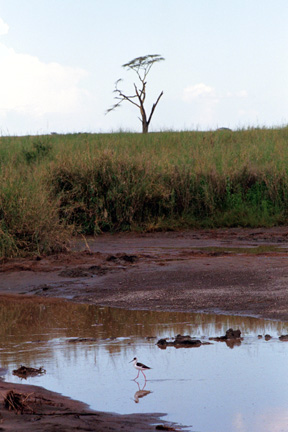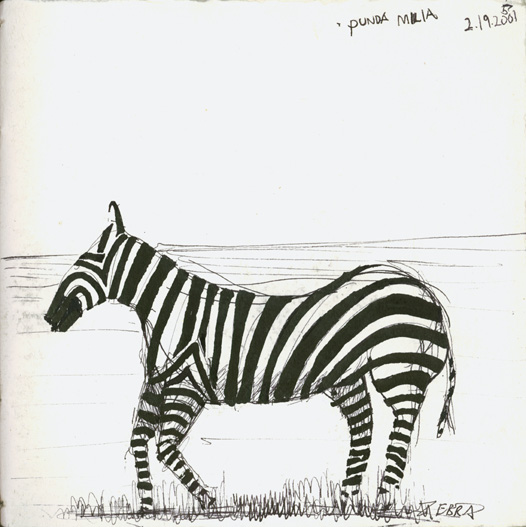
. Superb sunrise as usual 640. Dawn chorus is off the chart.



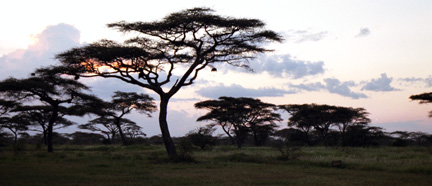
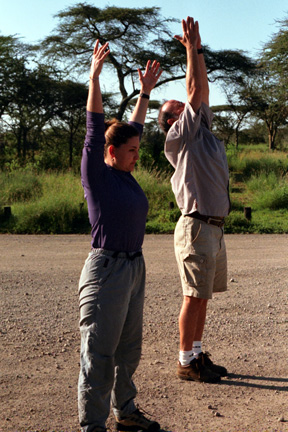
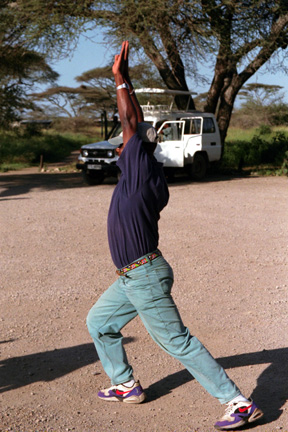
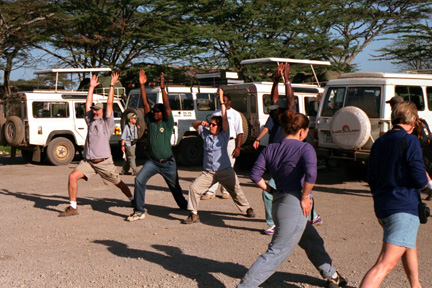

We meet the Charles the Tarangire elephant guy at breakfast. www.lpzoo.com/elephant. Off at 840 and Gigi we did not forget Mike!!!We drive through the prettiest acacias in all of Tz according to Mama Simba. Out of the trees back into the short grass plain, our lrs all spread out One sees a 20' old w-beest, still wet. We watch a Marabou stork swallow a White stork leg. Golden jackals chase off BB jackals at dead baby zebra.
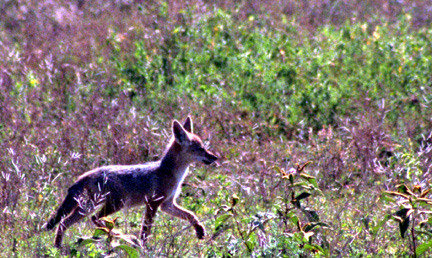
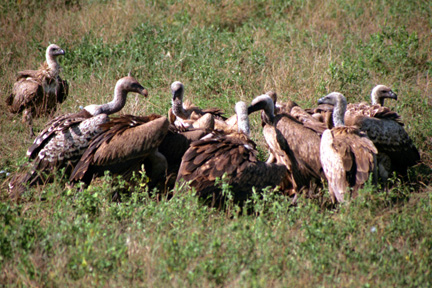
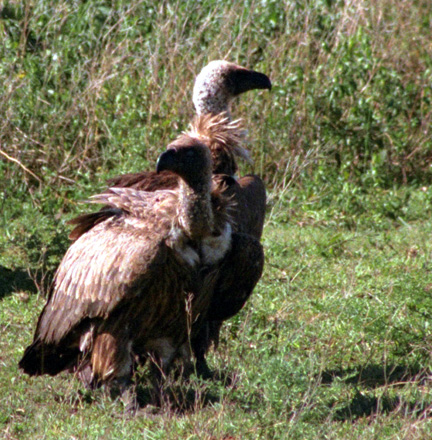

We are surrounded by 360 of animals, no place like it left on the planet Earth and it only occurs in Feb. We see Steppe eagles eating a baby gazelle. and the highlight of the morning is the vulture feast on the dead hyena. Smelly but fun fun fun. 4 species of vulture- Nubian, white headed, Ruppells, and white backed. Every land rover saw the quintessential Afr scene - vultures fighting over entrails.

Back to Pringle Hill just before 1130. Karen and Nasibu spot the big Simba on the big kopje. Good eyes!! There are 2 of the big fellows. We angle over to the Moru Rd, a regular freeway and get to our camp at Rongai 1. Home sweet home with our camp fellows waiting for us. Great view out across the plain. R and R in the tent saunas. Many many bug bites esp on the feet and ankles. Susan gets the prize but many are suffering..
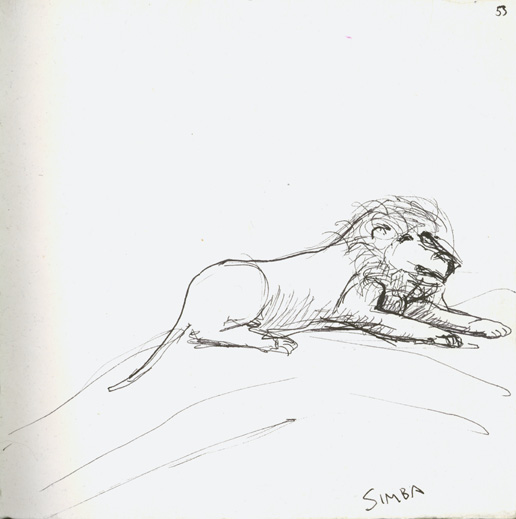
Meet for talk about the evolution of ungulates at 345. A refreshing
rain comes down onto the dining tent and makes the world smell
great.
Order Perissodactyla- odd toed (zebras, rhinos, tapirs,}
Order Artiodactyla even toed
RUMINATS: Giraffe, deer, Bovidae (antelopes, sheep, goats, cattle)
even toed ungulates that chew their cud, range from 1.5 kg royal
ante to 1900 kg giraffe. 37 MYA the climate changed from a subtropical
to cooler drier, leading to seasonal production of food. Ungulates
evolved in Eurasian and entered Afr 24 MYA the same time that
grasslands began to spread (Australopithecus appears).
Rumen: convert cellulose to food. by bacterial fermentation. In
non-rumen ferment is in the aftergut (ceucum = appendix) Results
in coarse dung of zebras, horses, ellies.
Fills rumen and then coarsest material floats up to the surface
of the semi-liquid rumen. Back to the mouth salivary glands maintains
the ph for bact. Grinding increases the surface area. Some nutrients
absorbed through the rumen wall. but smallest particles move into
main stomach. Finally to the cecum for final extraction. Not only
get energy from the plants but the microorganisms give off fatty
acids as metabolic wastes and the dead organisms themselves provide
proteins that give essential amino acids. Recycle urea.
Disadvantage- 4 days food to poop. (any one of you having that
problem?) Bob wrote a paper on it in college
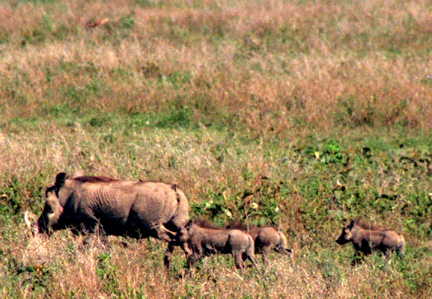
We are then off heading toward the Rhino Research Center but first we watch a group of impalas peacefully chewing their cud. What timing. Next stop a lioness in a tree looking intently at those same impalas, her sister, two cute cubs and 2 adol males who are about old enough to get kicked out of the pride. One lion walks right by our land rover and another one right by Hashims. good lion looks.
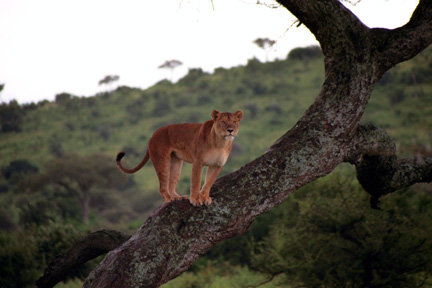
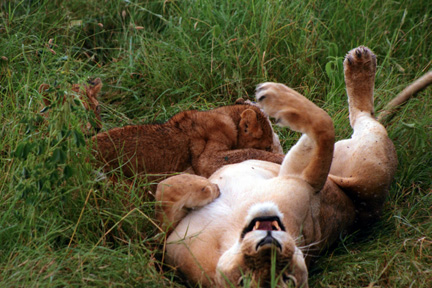
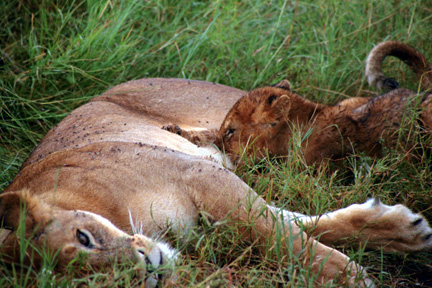

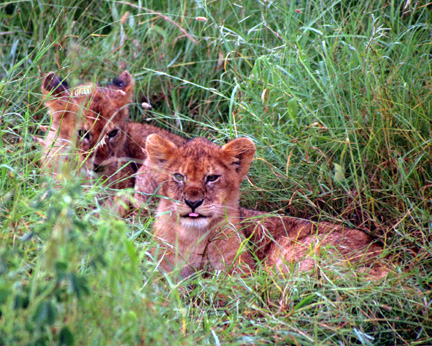
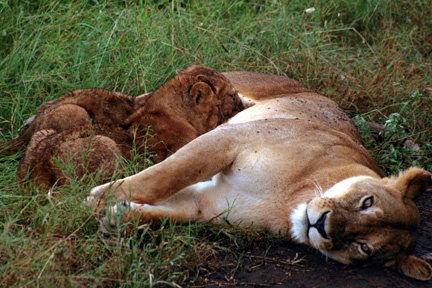
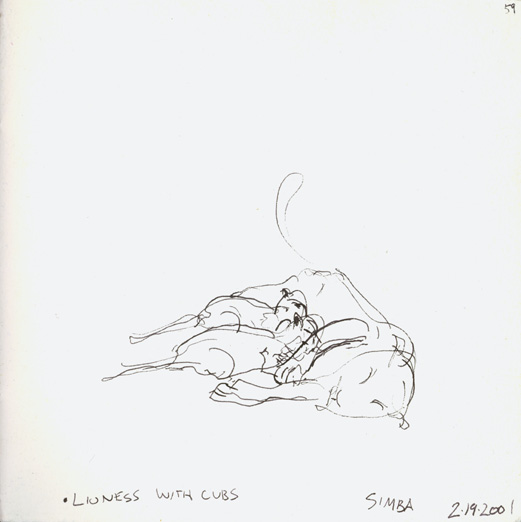

The road is a bit slippery, "slicker than snot" as we say back home. Our going is slow so we go to Plan B- Mora Kopjes campsite #7. The one I wanted.

I spy 2 rangers high up on one of them and we think just maybe the rhinos are near. We have 10 blessed minutes of complete silence on the rock - taking Africa in directly without higher brain processing.
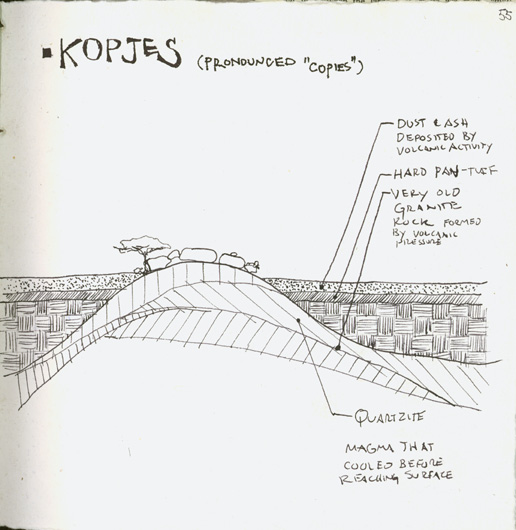
Going to church Mike says. And appreciated by all, more of it!!
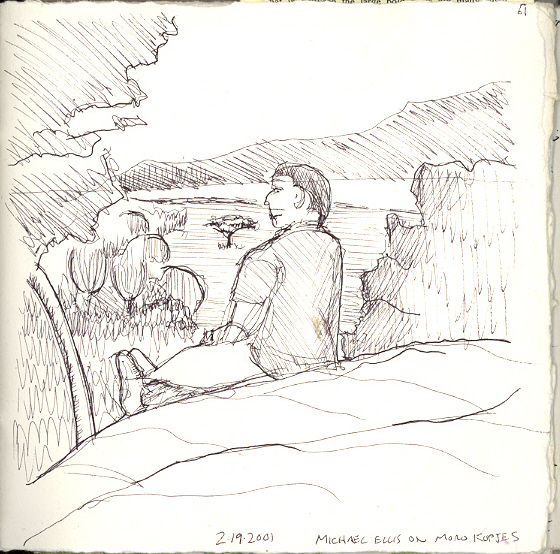
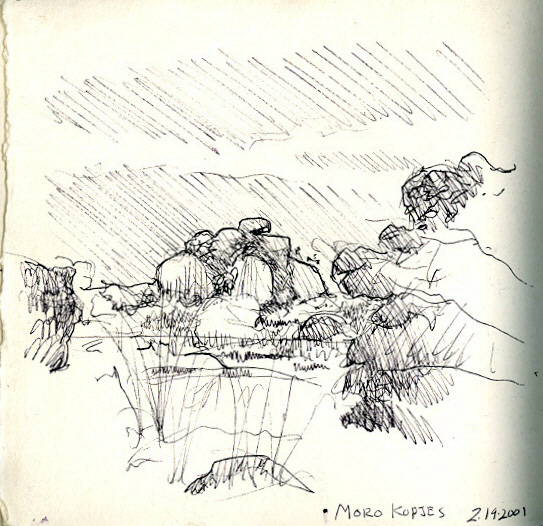
Back to camp and showers and dinner and the Dead Tree Desert or the Desert Date Tree or the dead dessert tree. Anyway fruit stuck on an acacia twig- good. To bed and few sounds.
